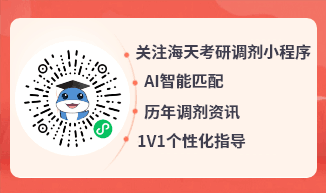每日一练:考研英语强化阅读新题型(四十九)
Text 2
Since the dawn of human ingenuity, people have devised ever more cunning tools to cope with work that is dangerous, boring, burdensome, or just plain nasty. That compulsion has resulted in robotics — the science of conferring various human capabilities on machines. And if scientists have yet to create the mechanical version of science fiction, they have begun to come close.
As a result, the modern world is increasingly populated by intelligent gizmos whose presence we barely notice but whose universal existence has removed much human labor. Our factories hum to the rhythm of robot assembly arms. Our banking is done at automated teller terminals that thank us with mechanical politeness for the transaction. Our subway trains are controlled by tireless robot-drivers. And thanks to the continual miniaturization of electronics and micro-mechanics, there are already robot systems that can perform some kinds of brain and bone surgery with submillimeter accuracy — far greater precision than highly skilled physicians can achieve with their hands alone.
But if robots are to reach the next stage of laborsaving utility, they will have to operate with less human supervision and be able to make at least a few decisions for themselves—goals that pose a real challenge. “While we know how to tell a robot to handle a specific error," says Dave Lavery, manager of a robotics program at NASA, “we can't yet give a robot enough 'common sense' to reliably interact with a dynamic world."
Indeed the quest for true artificial intelligence has produced very mixed results. Despite a spell of initial optimism in the 1960s and 1970s when it appeared that transistor circuits and microprocessors might be able to copy the action of the human brain by the year 2010, researchers lately have begun to extend that forecast by decades if not centuries.
What they found, in attempting to model thought, is that the human brain's roughly one hundred billion nerve cells are much more talented—and human perception far more complicated—than previously imagined. They have built robots that can recognize the error of a machine panel by a fraction of a millimeter in a controlled factory environment. But the human mind can glimpse a rapidly changing scene and immediately disregard the 98 percent that is irrelevant, instantaneously focusing on the monkey at the side of a winding forest road or the single suspicious face in a big crowd. The most advanced computer systems on Earth can't approach that kind of ability, and neuroscientists still don't know quite how we do it.
46. Human ingenuity was initially demonstrated in.
[A]the use of machines to produce science fiction.
[B]the wide use of machines in manufacturing industry.
[C]the invention of tools for difficult and dangerous work.
[D]the elite's cunning tackling of dangerous and boring work.
47. The word “gizmos" (line 1, paragraph 2) most probably means.
[A]programs. [B]experts. [C]devices. [D]creatures.
48. According to the text, what is beyond man's ability now is to design a robot that can
[A]fulfill delicate tasks like performing brain surgery.
[B]interact with human beings verbally.
[C]have a little common sense.
[D]respond independently to a changing world.
49. Besides reducing human labor, robots can also
[A]make a few decisions for themselves. [B]deal with some errors with human intervention.[C]improve factory environments. [D]cultivate human creativity.
50. The author uses the example of a monkey to argue that robots are
[A]expected to copy human brain in internal structure.
[B]able to perceive abnormalities immediately.
[C]far less able than human brain in focusing on relevant information.
[D]best used in a controlled environment.
2025考研人数达388w,考研热度依旧火热!如何备战2026考研?哪个考研专业适合自己?在职考生如何备考?考研知识点繁多,择校困难大,和海天考研咨询老师聊一聊。网课面授多项选,专业辅导1对1,全年集训随时学!









